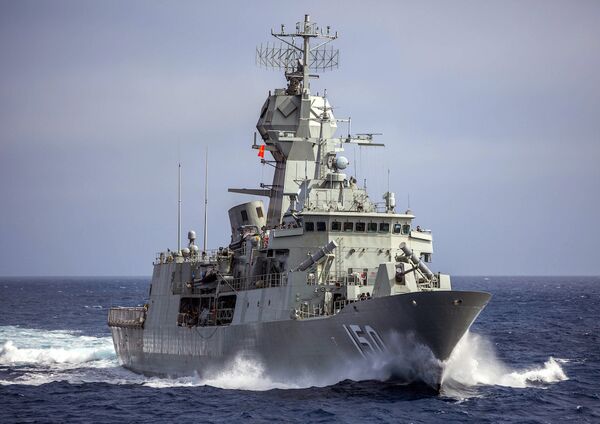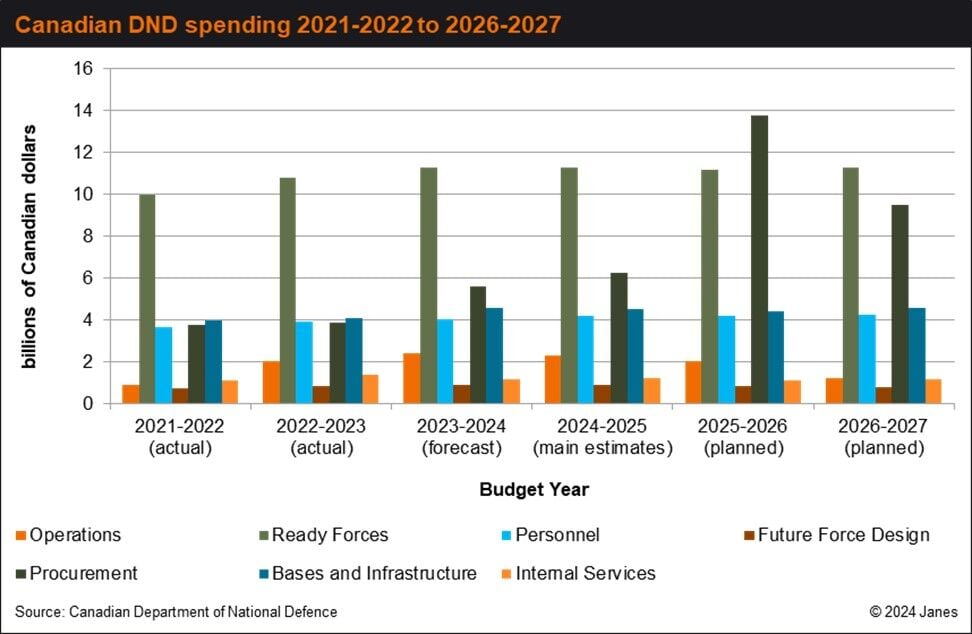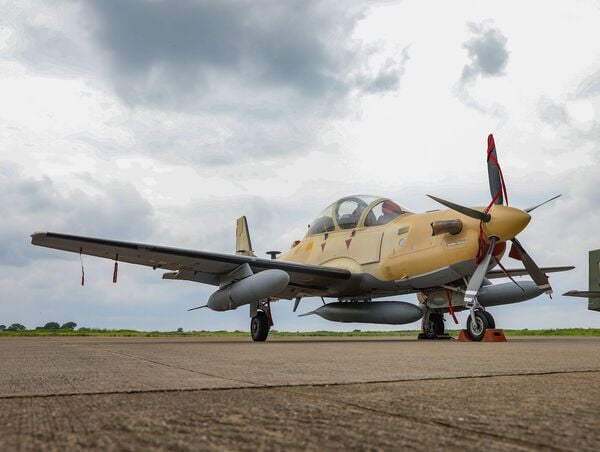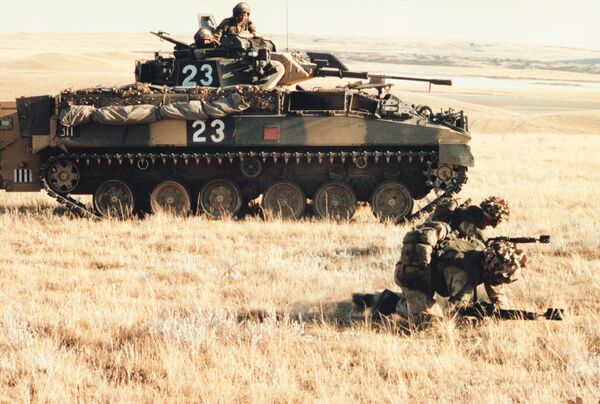- About
- Intara
- Capabilities
- Advisory
- Resources
- News
- Store
Babcock to take over Australian naval sustainment firm
17 February 2022
by Marc Selinger


The Australian Naval Ship Management joint venture was established in 2012 to maintain the Royal Australian Navy's Anzac-class frigates. (Babcock International)
UK engineering firm Babcock International Group has agreed to buy out its partner in the Australian Naval Ship Management (NSM) joint venture, expanding its support for the Royal Australian Navy, Babcock announced on 15 February.
Babcock, which owns 50% of NSM, will acquire the other 50% from Australian engineering firm UGL for AUD60 million (USD43 million). The transaction will close after receiving “customary approvals”, the announcement said.
UGL, which is part of the CIMIC Group, is exiting the joint venture to focus on defence investments that it fully controls, according to a CIMIC spokesperson.
Established in 2012 NSM maintains several types of vessels for the Australian navy, including Anzac-class frigates, Canberra-class landing helicopter dock (LHD) amphibious assault ships, and LHD landing craft. It employs about 300 people and generated revenue of AUD254 million in the fiscal year that ended on 31 March 2021.
Canada unveils CAD33.8 billion defence budget for 2024–25
18 April 2024
by Jeremiah Cushman


Actual and planned Canadian defence spending by category from 2021–22 to 2026–27. (Janes)
The Canadian government released its fiscal year (FY) 2024 defence budget on 16 April. The document projects spending of CAD33.8 billion (USD24.6 billion) in 2024–25, including adjustments from the Budget 2023 Refocusing Government Spending Exercise and incremental funding in the 2024 budget, although it warns that forecast amounts may change as programmes move through implementation. This is an increase from the forecast CAD29.9 billion spending in 2023–24, according to the document.
The 2024–25 main estimates produced by the Treasury Board projected defence spending of CAD30.6 billion, a small increase from the latest spending estimate for 2023–24, which totalled CAD30.3 billion. This is a 14% increase over the initial 2023–24 main estimate of CAD26.5 billion, according to Treasury Board figures. Expenditures in 2022–23 totalled CAD26.9 billion.
FIDAE 2024: Embraer sees market for 490 Super Tucanos
11 April 2024
by Zach Rosenberg


A Nigerian A-29 Super Tucano is pictured here. Embraer Defence CEO Bosco da Costa sees potential for up to 450 Super Tucanos over 20 years, including from Africa. (US Africa Command Public Affairs)
Embraer Defence & Security sees a market for up to 490 A-29 Super Tucano trainer and attack aircraft over the next two decades, Embraer president and CEO Bosco da Costa Jr told Janes on 10 April at the FIDAE 2024 airshow in Santiago, Chile.
“We are in touch with several countries around the world, not only here in South America, but we have some potential [customers] in Africa, in Asia, and in Europe as well,” said da Costa. “We are in advanced conversations with countries in Europe [and] in advanced conversations with countries in Asia. I cannot disclose the countries because the defence procurement process does not allow us to do that. But I assure you that we are now in a final stage in some of them.”
IT²EC 2024: Saab to continue supporting British Army live training
11 April 2024
by Olivia Savage


Saab has been contracted to upgrade the army's live training capability. Pictured are troops practising their debussing drills from a Saab DFWES-equipped Warrior infantry combat vehicle in Alberta. (Janes)
The British Army has signed a GBP60 million (USD75.7 million) three-year support contract with Saab to improve its live training capability.
The contract – Instrumented Live Training (ILT-D) – is replacing the existing Direct Fire Weapon Effects Simulator (DFWES) contract with Saab and will involve modernising its live training capabilities to improve interoperability and address obsolescence.
ILT-D is essentially a mid-life upgrade of the DFWES capability that will comprise upgrading and providing the latest soldier and vehicle training systems as well as EXCON software to ensure it remains relevant to the army's evolving training needs and is interoperable with its allies, Joakim Alhbin, the vice-president of Training and Simulation at Saab, informed Janes and other media representatives at the International Training Technology Exhibition & Conference (IT²EC) 2024.
DFWES is a laser-based Tactical Engagement Simulation (TES) capability that simulates direct and indirect fire.
UK engineering firm Babcock International Group has agreed to buy out its partner in the Australian ...
Latest Podcasts
Iran Israel analysis
In this podcast Janes analysts discuss the Iranian attacks on Israel on the 14 April. They highlight the military systems used by Iran and the performance and impact of these on Israel. They also discuss the implications of this attack goi...
Listen nowJanes Case Studies
Using Janes Intara to build a common intelligence picture: Russian build up on the Ukrainian border
View Case StudyNews Categories
 Industry Details
Industry Details